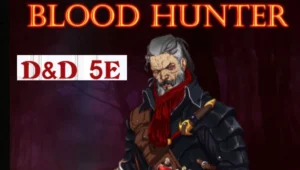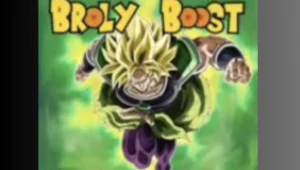Imagine a world where survival is a constant struggle, and hope feels like rebellion. This is the basic concept of The Hunger Games. Written by Suzanne Collins, this thrilling dystopian series has captured hearts worldwide with its deep themes, unforgettable characters, and gripping action. Let’s dive into the world of The Hunger Games, exploring its story, meaning, and impact.
Table of Contents
What is The Hunger Games?
The Hunger Games is a dystopian series set in Panem, a futuristic world ruled by the wealthy Capitol. Panem is divided into 12 districts, each forced to participate in an annual event—the Hunger Games. This brutal competition requires tributes (children chosen from each district) to fight until only one survives. The Games serve as a reminder of the Capitol’s control, following a failed rebellion years earlier.
The series includes three books:
- The Hunger Games
- Catching Fire
- Mockingjay
The Plot: A Quick Overview
The First Book: The Hunger Games
The story starts with Katniss Everdeen, which was a brave 16-year-old. She volunteers to replace her sister, Prim, as a tribute. Alongside Peeta Mellark, she enters the deadly Games. Katniss uses her intelligence and archery skills to survive while trying to maintain her humanity in the face of violence.
Catching Fire: The Spark of Rebellion
After surviving the Games, Katniss and Peeta return home as victors. However, their defiance during the Games inspires rebellion across Panem. They are forced into the Quarter Quell, a special version of the Hunger Games featuring past victors. This event further fans the flames of revolution.
Mockingjay: The Rebellion
The final book sees Katniss become the Mockingjay, a symbol of resistance. She leads a revolution against the Capitol, fighting not only for freedom but also for justice and peace. The story ends with the fall of the Capitol and the abolition of the Hunger Games.
Themes That Resonate
Survival and Sacrifice
At its core, The Hunger Games is about survival. Characters face physical and emotional challenges, highlighting the lengths people go to protect their loved ones.
Rebellion Against Oppression
The Capitol’s control is a metaphor for oppressive governments. The series shows how even small acts of defiance, like Katniss’ decision to save her sister, can spark massive change.
Propaganda and Media
The Capitol uses propaganda to manipulate public opinion, showcasing the power of media in controlling narratives. This theme feels relevant in today’s digital age.
Hope and Unity
The Mockingjay symbolizes hope, uniting people against a common enemy. The story reminds us that hope can thrive even in the darkest times.
The Characters We Love
Katniss Everdeen
Katniss is a fighter, protector, and reluctant hero. Her journey from a survivor to a leader makes her relatable and inspiring.
Peeta Mellark
Peeta represents kindness and resilience. His selflessness and loyalty to Katniss make him a fan favorite.
Gale Hawthorne
Gale, Katniss’ best friend, offers a different perspective on rebellion. His passion for justice often clashes with Katniss’ need for compassion.
President Snow
As the series’ villain, President Snow represents tyranny and manipulation. His icy demeanor and cunning mind make him a formidable foe.
Effie Trinket and Haymitch Abernathy
Effie brings humor and flamboyance, while Haymitch, a former victor, adds grit and wisdom to the story.
The World of Panem
Panem is not just a setting; it’s a character in itself.
- The Capitol: Lavish and controlling, it represents wealth and power.
- District 12: Poor and coal-dependent, it’s home to Katniss and Peeta.
- The Arena: A deadly battlefield where tributes fight for survival.
Each district has its own identity, reflecting the diversity and inequality within Panem.
Why is The Hunger Games So Popular?
Relatable Themes
From inequality to resistance, the series explores issues that resonate with readers across generations.
Compelling Characters
The characters feel real, with flaws and strengths that make them relatable.
Thrilling Storyline
The mix of action, strategy, and emotional depth keeps readers hooked.
The Franchise’s Impact
The Hunger Games expanded beyond books into blockbuster movies, earning over $3 billion worldwide. The films brought Panem to life, with Jennifer Lawrence’s portrayal of Katniss earning critical acclaim. The series also inspired countless dystopian stories, like Divergent and The Maze Runner.
Did You Know?
- Suzanne Collins got the idea for The Hunger Games from flipping between news channels and reality TV.
- The iconic Mockingjay pin became a real-world symbol of rebellion and courage.
- The arena scenes were filmed in North Carolina, showcasing breathtaking landscapes.
Lessons from The Hunger Games
- Courage Changes the World: Katniss’ bravery inspires others to stand up for their rights.
- The Power of Unity: People can achieve great things when united by a common goal.
- Question Authority: The Capitol’s control shows the dangers of unchecked power.
Conclusion
The Hunger Games is more than a story about survival; it’s a reflection of society’s struggles and strengths. Its themes of hope, rebellion, and unity remind us of the power of courage and compassion. Whether you’re a first-time reader or a longtime fan, the series offers lessons and entertainment that stay with you long after the final page.
FAQs
Why Suzanne Collins inspired to write The Hunger Games?
Suzanne Collins combined her observations of war coverage and reality TV to create a dystopian world.
What is the Mockingjay’s significance?
The Mockingjay symbolizes hope, resistance, and unity against oppression.
The Hunger Games series consist with how many books?
The main series has three books: The Hunger Games, Catching Fire, and Mockingjay.
Why did Katniss volunteer for the Games?
Katniss volunteered to save her sister, Prim, showcasing her selflessness and courage.
How successful was the movie adaptation?
The movie franchise grossed over $3 billion, becoming one of the highest-grossing series in history.




















Hi, I just visited techovive.com and wondered if you'd ever thought about having an engaging video to explain what you…
Hi, I just visited techovive.com and wondered if you'd ever thought about having an engaging video to explain what you…
Hi, I just visited techovive.com and wondered if you'd ever thought about having an engaging video to explain what you…
You have A Good Analyze.I agree with your comparison.
Hi there, We run a Youtube growth service, where we can increase your subscriber count safely and practically. - Guaranteed:…
Hi there, We run a Youtube growth service, where we can increase your subscriber count safely and practically. - Guaranteed:…
Hi there, We run a YouTube growth service, which increases your number of subscribers both safely and practically. - We…
Hi there, We run a Youtube growth service, where we can increase your subscriber count safely and practically. - Guaranteed:…
Very Helpful content. Thanks for sharing.
Hi there, I'm reaching out because we've just released a complete WordPress video training package with unrestricted Private Label Rights.…